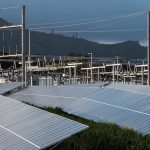As the global shift toward renewable energy sources gains momentum, the integration of solar power with energy storage systems becomes a pivotal aspect of ensuring a stable and sustainable energy supply. Two prominent technologies in this domain are solar + battery storage and solar + pump storage systems. This column aims to provide a comprehensive comparative analysis of these systems, focusing on efficiency and performance metrics.
Energy Storage Basics:
Before delving into the comparison, it’s essential to understand the fundamental principles behind each technology. Solar + battery storage involves capturing solar energy and storing it in batteries for later use. This method provides on-demand energy, allowing for flexibility in power consumption. On the other hand, solar + pump storage utilizes the principle of gravitational potential energy. Excess solar power is used to pump water uphill, and when energy is needed, the water is released to generate electricity through turbines.
Round-Trip Efficiency:
One critical metric for energy storage systems is round-trip efficiency—the ratio of the energy retrieved to the energy stored. In the case of solar + battery storage, modern lithium-ion batteries boast high round-trip efficiencies, typically exceeding 90%. This means that more than 90% of the stored energy can be retrieved for use. On the flip side, solar + pump storage systems generally exhibit lower round-trip efficiencies, often hovering around 70-80%. The conversion of electrical energy to gravitational potential energy and back introduces inherent losses.
Response Time:
The response time of an energy storage system is crucial, especially in scenarios requiring rapid adjustments to fluctuations in energy demand or supply. Solar + battery storage systems shine in this aspect, offering rapid response times measured in milliseconds. This makes them ideal for applications where quick adjustments are essential, such as stabilizing the grid during sudden changes in load. In contrast, solar + pump storage systems have a slower response time, typically measured in minutes. The need to release stored water and generate electricity through turbines introduces a lag compared to the nearly instantaneous response of battery systems.
Capacity and Scalability:
Another important consideration is the capacity and scalability of these systems. Solar + battery storage systems are highly modular, allowing for easy scalability by adding more battery units. This makes them suitable for a wide range of applications, from residential solar installations to large-scale grid storage projects. Conversely, solar + pump storage systems often require specific geographical conditions, such as elevated terrain and access to water bodies. While they can provide substantial storage capacities, their scalability is constrained by environmental factors.
Environmental Impact:
Analyzing the environmental impact is crucial for evaluating the sustainability of energy storage systems. Solar + battery storage systems involve the manufacturing and disposal of batteries, which can raise concerns about resource extraction and recycling. On the other hand, solar + pump storage systems, relying on gravitational potential energy, have a lower environmental impact in terms of materials but may pose challenges related to land use and ecosystem disruption. In conclusion, the choice between solar + battery storage and solar + pump storage systems depends on specific project requirements and objectives. If rapid response times, high round-trip efficiency, and scalability are paramount, solar + battery storage systems are a compelling choice. However, for applications where geographic and environmental conditions permit and longer response times are acceptable, solar + pump storage systems may offer a viable and sustainable alternative. Ultimately, both technologies contribute to the diverse landscape of renewable energy solutions, each with its unique set of advantages and challenges.
Related
This post was originally published on 3rd party site mentioned in the title of this site







